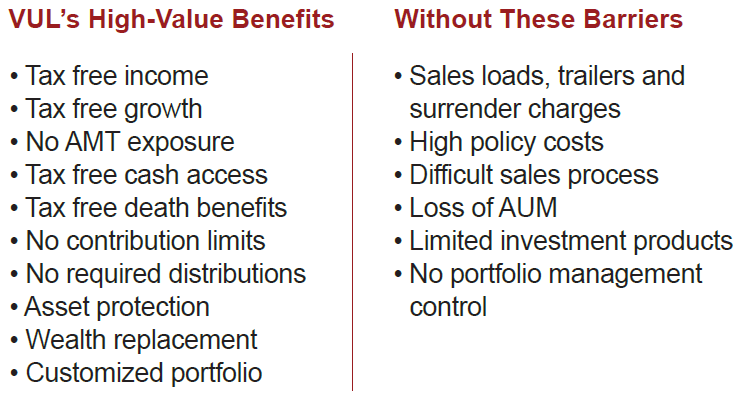Blog
Our blogs focus on AAVUL's many wealth and investment planning applications.
The 45-Day Business Plan

Business plans are well-meaning documents. A business inspiration takes form as the aspiring entrepreneur digs into product/service design, scalability, market size, competition, pricing, selling tactics, operations, budgeting, and so on. Collecting thoughts into a single document builds a foundation that makes the risky step of starting a business manageable.
The Dusty Business Plan
That said, few entrepreneurs work with their original business plan. The often harsh reality of running a business day after day smacks against the plan’s clinical, step-by-step thinking. But, this breakage does not belie the truth that planning remains a core element of success, or, if not done, a major reason for failure. The absence of an active business plan leads to meandering services, less efficiency, less focus and greater risk exposure.
A lack of day-to-day connection is the primary reason why business plans get dusty on shelves instead of being a desktop guidebook. In other words, the initial plan developed a thread of “how things should work” and not the reality, once the business was formed, of “how things are working.”
The 45-Day Planning Cycle
A 45-day business plan merges the daily “to do” list with the business objectives that give a firm its purpose. It recognizes that new information comes up and adjustments need to be made, but it keeps sight of how those adjustments fit within a strategic context.
The planning cycle sequence creates a living document across a year. A post-cycle review connects the immediately past plan to the next one. An annual review looks back and evaluates what progress was achieved and where more effort is needed.
Each review studies the tasks and forces judgment of the value for the effort expended:
Where was progress made to the objectives, and where was it stymied?
What are needed changes to achieve the desired progress?
Is the work just completed making the firm more valuable?

Making it Work
Planning in 45-day cycles is tighter since the inputs used are more current and the learning timelier. The business engages in a virtuous cycle of planning, doing, and learning.
In an Excel spreadsheet or Word document, the 45-day planning structure is simple to set up, but daily diligence is important to success. While the full planning methodology is beyond this blog’s scope, the following is a quick outline of the structure:
- Strategic Objective Worksheets: The 45-day planning process is a set of worksheets; each worksheet should list one of the business’ objectives such as “Increase clients by 30 percent” or “Form five new referral relationships.”
- Integrated To Do List: Take the firm’s to do/project lists and assign each task to a worksheet if it supports the corresponding objective. Since these tasks align with objectives, they are priorities.
- Ordering the Tasks: For the tasks under each objective, order them according to the expected sequence; a project plan emerges.
- Non-Strategic Tasks: Some tasks don’t fit with any of the worksheets; they may be necessary but aren’t strategic (e.g. paying bills). These will be kept on a separate sheet called “Scheduled Work” (step No. 6).
- Maintenance: Each completed task is noted as such on its “Objective Worksheet.” New tasks that come up each day are added according to the process in steps No. 2, No. 3 and No. 4. When a new objective emerges, a worksheet is prepared.
- Scheduled Work: The non-strategic tasks are worked on during non-critical operational time (e.g. after work hours; a weekend day). The key is the prime working hours are spent on priorities; they must get done for the firm to progress.
- Cycle Review: At the end of each cycle, schedule a meeting (preferably with key staff) and critically review the progress toward the firm’s objectives.
- Task Rollover: Some tasks can’t be completed in a 45-day cycle so they are rolled over to the same worksheet for the next cycle. If a task continues to roll, the review should identify if it’s simply a matter of project/task sequencing or a mismatch to the assigned objective worksheet.
Achievements
One of the worst feelings a business owner can have is to look back in time and realize that few of the firm’s objectives were met. Working incrementally and with purpose eliminates this bad outcome.
Think of each 45-Day business plan as a stepping stone that leads across a stream. One step comes after another, and the sum of steps leads to clear progress. When looking back (i.e. the review process), these steps bring lasting achievement that ultimately translate into a more valuable business.
Insurance Like It Should Be: Benefits without Barriers
Advisor-Applied VUL is a vastly different – and more powerful – wealth-planning tool than your past experience may suggest. You and your clients gain VUL’s high-value benefits but the obstacles that may have prevented you from using it in the past are stripped away.

Take The Next Step.
Embrace Tax-Free Portfolios For Your HNW, High-Income Clients.
Experienced PPLI Practitioners
Investment
Products Firms
Advisors
New to AAVUL
Resources
for Advisors
Insurance Like It Should Be
Benefits, without Barriers
You’re most familiar with retail VUL and its drawbacks:
loads; high costs; complex products; investment limitations; a difficult sales process.
Check out our AAVUL partners’ solutions that keep VUL's benefits while removing the barriers.




